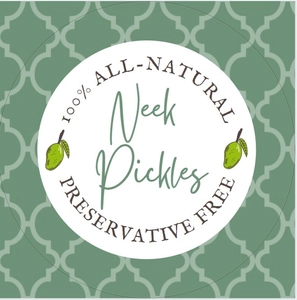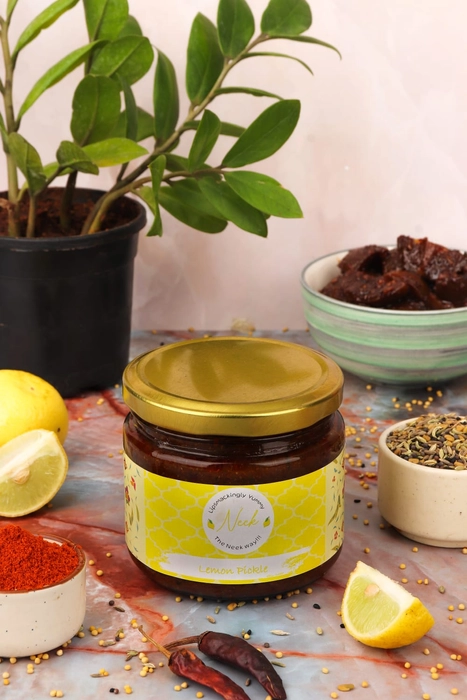
Introduction
The scientific name of lemon is Citrus Limonum. Lemon is a species of a small evergreen tree coming from the flowering plant family of Rutaceae, a native of Asia, particularly Assam, northern Myanmar and China. The yellow fruit of the tree which is lemon is used for culinary and non-culinary purposes. The pulp and rind of lemon is also used in cooking and baking. Lemon juice is an important ingredient in the making of pastries and desserts like tarts and lemon meringue pie. The astringent flavour of the fruit is used to enhance poultry, fish and several vegetable dishes all around the world. Lemonade made using lemon, water and sugar is a famous warm-weather drink which has many nutritional advantages. Lemon juice is also used to make tea. Lemon juice has lot of citric acid and is a rich source of vitamin C along with smaller amounts of vitamin B like riboflavin, thiamine and niacin. Lemons contain various phytochemicals like polyphenols, tannins and terpenes. The lemon plant grows into an evergreen spreading bush or small tree about 3 to 6 mts high. It bears young oval leaves with a reddish tint to them which later turn green. In some varieties the young branches have sharp thorns at the axils of the leaves. The lemon tree flowers are found in small clusters in the leaf axil.
Origin of Lemon fruit
It is not exactly known from where did lemon originate but they are thought to have first been grown in Assam, northern Myanmar and China. It has been found that lemon was a hybrid between bitter orange and citron. The word lemon must have originated in the Middle East. It draws a part from the Old French Limon, then Italian Limone, then Arabic Laymun and the Persian Limun.

Varieties of Lemon
Lemon is found in many varieties all over the world. The Bonnie Brae is oblong, smooth, thin-skinned and seedless mostly grown in San Diego County, USA. Then another variety is called Eureka which grows all the year round and in abundance. It is the common supermarket variety which is also called Four Seasons as it can produce fruit and flowers together all the year round. The Lisbon lemon is very similar to the Eureka lemon being the second supermarket variety. It is smoother than the Eureka, has thin skin and very less or no seeds at all. It is more juicy than Eureka. There is another variety called the ‘Sorrento’ which has its origin in Italy.
History of the Lemon fruit

The origin of lemon in Europe was supposed to be during the time of Ancient Rome in the 2nd century AD. They were introduced to Persia, Iraq and Egypt around 700 AD. The first prominent cultivation of lemon in Europe started in Genoa in the mid-15th century. Lemon was firstly introduced to Americas in 1493 when Christopher Columbus brought lemon seeds to Hispaniola on his voyages. Later the Spanish conquest helped to spread the knowledge about lemon around. It was primarily used as an ornamental plant for medicinal purposes. Then in the 19th century they were planted abundantly in Florida and California. Then in 1747 James Lind did experiments on seamen suffering from scurvy by adding lemon juice to their diets though it was not yet known that vitamin C was an important component of a complete and healthy diet.
Uses of Lemon
In nutrition
Lemon is a rich source of vitamin C having 64% of it in 100 gms of lemon juice. The lemon juice, rind and peel are used in different ways in various food and drink s. A whole lemon is used to make marmalade and lemon curd. Then it’s slices and rind are used to garnish various foods and drinks. The lemon zest which is the grated part of the outer rind of the fruit is used to add flavour to baked delicacies like cakes, puddings and rice and chicken dishes.
Uses of Lemon Juice
The lemon juice is used to make lemonade, soft drinks and cocktails. It is also used in marinades for non veg preparations. In the UK, it is frequently added to a variety of pancakes. Lemon juice is also used as a short-term preservative for certain foods which oxidize fast like cut cut fruits and pickles.
Uses of Lemon Peel
In Morocco, lemons are kept in jars or in barrels of salt when being preserved. The salt is made to penetrate the peel and rind and soften them making them last indefinitely. This preserved version is used in many variety of dishes. Preserved lemons can also be found in Italian, French, Greek and Sicilian dishes. The lemon peel is also used to manufacture Pectin, a polysaccharide used as a gelling agent and stabilizer in foods and drinks.
Lemon Oil
Lemon oil is extracted from cells which have it in the skin. With the help of a machine the cells inside a lemon fruit are broken and then a water spray is used to flush off the oil and then the oil-water mixture is filtered and separated by centrifugation.
Lemon Leaves
The leaves of the lemon juice are used to make tea and cooked meats and other seafoods.
Other uses of Lemon
Industrial use
Lemons were the first best commercial source of citric acid before the development of fermentation based methods.
Use in Aromatherapy
Lemon oil is used in aromatherapy also. Lemon oil aroma does not cause harm to the human immune system and leads to relaxation.
Nutritional facts of lemon
Lemons are one of the most popular citrus fruits of the world. The lemon is a hybrid variety from the original citron and lime fruits. The lemon fruit has a sour taste so is not eaten alone as a whole fruit but often used as a garnish in meals and in many other ways.
It is used to make lemonade a popular drink had in the summer season which helps to hydrate when you have acute dehydration. It has lot of vitamin C and fibres along with plant compounds, minerals and many essential oils. The fruit has many health benefits too. It lowers the risk of heart diseases, cancer and kidney stones.
Lemon has very little fat and protein. It has mainly carbohydrates(10%) and
water (89%). A lemon has only 20 calories. There are many nutrients in 100 gms
of raw and peeled lemon like:-
Calories-29%
Water-89%
Protein-1.1 gms
Carbs-9.3 gms
Sugar-2.5 gms
Fiber-2.8 gms
Fat-0.3 gms
Carbohydrates—The carbs in lemons are mainly made of fibres and simple sugars like glucose, fructose and sucrose.
Fibre—The main fibre in lemon is Pectin. It is a soluble fibre and can lower blood sugar level by slowing down the digestion process of sugar and starch. The dietary fibres are a very important part of a healthy diet providing various health benefits.
Vitamins and minerals—Lemons have many vitamins and minerals making it a very nutritious fruit.
Some of the vitamins and minerals present in lemon are:-
Vitamin C-It is an important vitamin and an antioxidant which is important for the immune function and skin health.
Potassium-Potassium-rich diet can lower blood pressure levels and has good effect on the heart.
Vitamin B6-This vitamin assists in changing food into energy.

Presence of other plant compounds in Lemon
The plant compounds are natural bioactive substances which are found in plants. These plant compounds have positive effect for ailments like cancer, heart disease and inflammation.
The main plant compounds in lemon are:-
Citric acid–It is the organic acid found in abundance in lemons and it helps prevent the formation of kidney stones.
Hesperidin–This is an antioxidant which helps to strengthen the blood vessels and prevents atherosclerosis which is the fatty deposit build up inside the arteries.
Diosmin–It is an antioxidant which is used in some drugs which affect the circulatory system. It improves muscle tone and reduces the chronic inflammation inside the blood vessels.
Eriocitrin–It is an antioxidant which is found in the lemon peel and it’s juice.
D-Limonene–It is found mainly in the peel and it is the main component of lemon essential oils and gives the distinct aroma to lemon. It also helps to relieve heartburn and stomach reflux.
Health benefits of Lemon
For the heart–Heart ailments like heart attacks and strokes are the world’s most common cause of death. And the intake of fruits high in vitamin C helps to reduce heart attack risk considerably. The low level of vitamin C in blood leads to increased risk of stroke specially in obese people and those who have high blood pressure. The intake of isolated fibers from citrus fruits decreases blood cholesterol levels and the essential oils in lemons protect LDL or the bad cholesterol particles from getting oxidised.

Prevention of kidney stones–The citric acid present in lemons reduce the risk of kidney stones. It has been found by research that lemon juice and lemonade are effective at preventing kidney stones.
Prevention of anaemia–The cause of anaemia is iron deficiency which is present in pre-menopausal women. Lemon contains small amounts of iron and they are a big source of vitamin C and citric acid which increases the absorption of iron. As lemons help to absorb iron they can help to prevent anaemia.
Cure of cancer–-Lemons help to reduce the risk of many cancers like breast cancer. It is because of presence of plant compounds like hesperidin and d-limonene.
Lemon water
Lemon water is taken by many people in either hot or cold forms a few times per day. Drinking water having freshly squeezed lemons can have many health benefits. Lemon water is a rich source of vitamin C and plant compounds which improves the immune function, protects against many diseases and increases the absorption capacity of iron. The citric acid present in lemon decreases the formation of kidney stones by diluting urine and increasing the citrate content in it. The lemon aroma got from essential oils present in lemon helps to relieve from stress and is a mood enhancer.
About Lemon Pickle

Lemon pickle is also known as Preserved lemon. It is a condiment very common to Indian cuisine. Preserved lemon is a variety of pickled lemon where lemons are preserved in brine. The basic brine has salt and lemon juice. The lemons preserved in the brine for sometime ferment and soften after which they become edible. It is famous in Morocco also. It is also known as country lemon. Lemon Pickles are made generally year round and they have a long shelf life of 2 or more years. Pickles are included in almost all meals of almost all cities of our country. They aid in digestion process and it is the second best popular pickle preferred by every Indian after the mango pickle. Every region in India has a different recipe to make pickles from lemons.
About NEEK Lemon Pickle
At NEEK Pickles there are many varieties of lemon pickles made some of which are sour and some are sweet and sour both. The pickle is made using the choicest and freshest raw materials, a set of unique spices and the best quality oils. Some of the ingredients used to make this pickle are lemons, salt, turmeric powder, powdered yellow mustard, five spices, pickle masala, vinegar and mustard oil.

It is put in sunlight and a delicious pickle rich with taste and bursting flavours along with nutritional benefits is got which is sure to blow your mind and satisfy your taste palettes perfectly. This is a pickle with no compromise, only lively and delicious taste and bliss which stays in your mind and comforts your heart from one dusk to the next sunrise!


